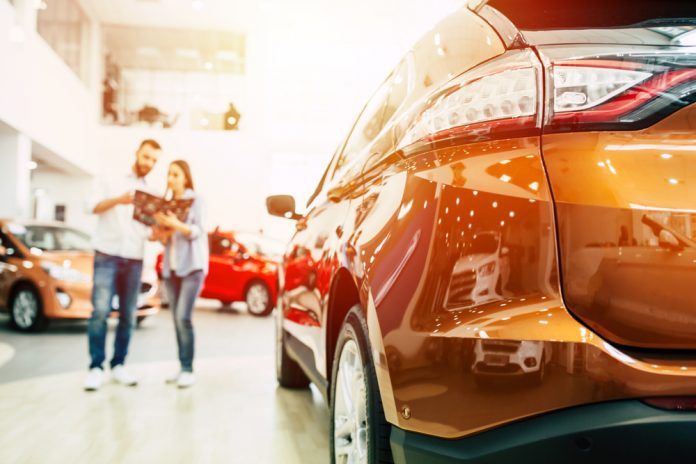What if you could predict the future? Imagine if that prediction wasn’t based on some crystal ball but rather on a keen observation of the past, coupled with an awareness of current trends. It’s said that history often repeats itself, and in the automotive world, we might be on the brink of a déjà vu moment reminiscent of the 1970s and 1980s.
In 1981, unemployment was 8 percent, while skyrocketing prices and fuel shortages opened the door for Japanese imports to flood the U.S. market. They were offering more affordable and fuel-efficient alternatives to domestic vehicles, and the U.S. was considering a trade war. “Voluntary quotas” limited Japanese imports, which already equaled nearly 8 percent of car sales. In 2024, that market share hovers around 40 percent.
Fast-forward to today, and we’re witnessing a similar scenario unfold, albeit with a different cast of characters and circumstances. Knowing the past can prepare us for the future.
The Price Surge: A Stark Reality
New car prices have soared to unprecedented heights in the last five years. The average cost of a new vehicle has risen by over 30%, a rate that far outpaces the growth in consumer earnings. That means that in 2018 and 2019, the average new car cost less than $40,000 ($37,577 and $38,948, respectively), while today, according to recent data from Cox Automotive, the average transaction price for new cars is $48,759.
While the economy flaunts its low unemployment rates, the reality is that real wages have stagnated or even declined when adjusted for inflation. The gap between what people earn and what they’re expected to pay for a new car is widening, leaving many consumers questioning the value and affordability of the latest models.
The Consumer Dilemma: Between a Rock and a Hard Place
Faced with exorbitant prices, consumers are at a crossroads. Many are deferring their dreams of a new car, turning to the used car market, or holding onto their current vehicles longer than ever before. The harsh reality of financial constraints overshadows the allure of the latest technology and features, even if the security issues were resolved. This shift in consumer behavior is more than a trend; it’s a stark reflection of the economic pressures the average buyer faces.
Dealer Challenges: Navigating the Pricing Dilemma
Dealerships are on the front lines of this pricing dilemma, grappling with the challenge of maintaining sales volumes amid rising vehicle costs. The shift towards higher-priced models, coupled with a decrease in consumer purchasing power, is narrowing the pool of potential buyers. This scenario is further complicated by the possible entry of less expensive Chinese-made vehicles poised to enter the market. Even Mercedes CEO Ola Kallenius suggests that competition would benefit the market.
With their competitive features and lower price points, especially among EVs, these vehicles could seamlessly fill the void left by increasingly unaffordable domestic models if the U.S. doesn’t burden them with tariffs. Even Ford sees China as a colossal threat with EVs and will eventually be a growing competitor in the ICE segment.
This shift presents a dual-edged sword for dealerships: a challenge in the face of new competition and an opportunity to diversify inventory. Dealers must proactively look ahead, whether that means bolstering their pre-owned inventory or exploring new car lines.
Adapting sales strategies to cater to a more price-sensitive consumer base while keeping a vigilant eye on emerging competitors will be crucial in navigating this evolving landscape.
Adapting to the New Normal: A Dealership’s Guide
In this new normal, dealerships will be forced to pivot, adapt, and overcome the issues on the horizon. The key to overcoming what lies ahead is understanding consumers’ evolving needs and preferences.
Maybe offering tried and true flexible financing options, promoting certified pre-owned vehicles, and emphasizing the value of customer service are the best a dealer can do to help bridge the gap. That’s okay. It’s about meeting consumers where they are, financially and emotionally, and guiding them through their automotive journey with empathy and expertise.
Preparing for the Future: The Road Ahead
As we peer into the rapidly approaching future, it’s clear that dealerships must be proactive in their approach. Embracing digital tools, enhancing the online buying experience, and fostering long-term customer relationships are crucial steps in staying ahead. The future of the automotive industry may be uncertain, but one thing is sure: adaptability and customer-centricity will be the driving forces behind success.
A Glimpse into Tomorrow
So, again, what if you could predict the future? Perhaps it’s not about having a crystal ball but learning from the past, staying attuned to the present, and being prepared to pivot for the future. The road ahead will have challenges for dealerships and consumers alike, but it’s also ripe with opportunities for those willing to adapt and innovate.



